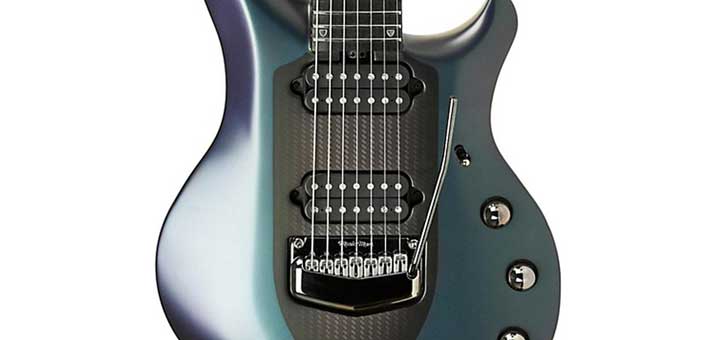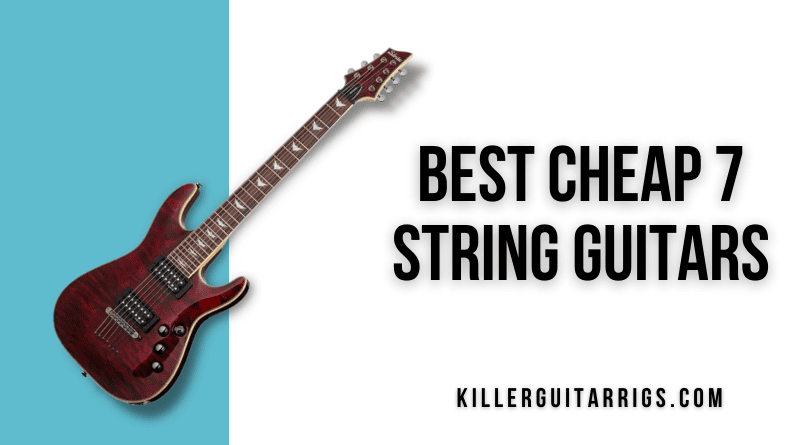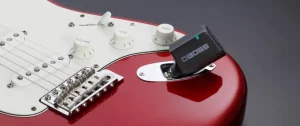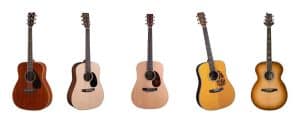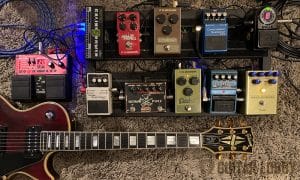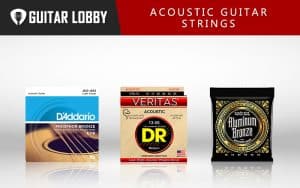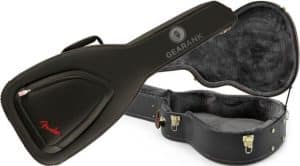Looking to take your guitar playing to the next level? In the search for the perfect 7 string guitar, you may find yourself overwhelmed with options. Fear not, because we’ve got you covered with the ultimate guide to finding the best 7 string guitar. Whether you’re a beginner looking to explore new sounds or a seasoned guitarist wanting to expand your range, this guide will help you navigate the world of 7 string guitars with ease. From the different types and styles available to the factors you should consider before making a purchase, we’ve gathered all the essential information you need to make an informed decision. So, get ready to shred like never before and find the 7 string guitar that will take your musical journey to new heights.
1. Understanding 7 String Guitars
1.1 What is a 7 string guitar?
A 7 string guitar is a guitar that features an additional low B string, extending the range of the instrument beyond the traditional 6 strings. By adding the low B string, the guitar is capable of producing lower notes, allowing for greater versatility and depth in playing. This extra string is typically placed below the low E string and is tuned to B, resulting in a tuning of B-E-A-D-G-B-E from low to high.
1.2 History and evolution
The concept of a 7 string guitar dates back to the early 19th century, but it wasn’t until the 1980s that it gained significant popularity in modern music. The original intention behind the creation of the 7 string guitar was to provide a way for guitarists to achieve lower and heavier tones without having to down-tune their instruments. This innovation allowed for new playing techniques and expanded possibilities in music composition.
Over the years, 7 string guitars have become synonymous with genres such as metal, progressive rock, and jazz fusion. Influential guitarists like Steve Vai, John Petrucci, and Tosin Abasi have played a pivotal role in popularizing the instrument and pushing its boundaries.
1.3 Advantages of playing a 7 string guitar
Playing a 7 string guitar offers several advantages that make it a desirable choice for many guitarists:
-
Extended range: The extra low B string adds depth and richness to your playing. It allows for lower tunings and a wider range of notes, making it ideal for playing heavy and progressive music styles.
-
Greater chord voicings: The addition of the low B string opens up new possibilities for chord voicings. It enables guitarists to create fuller and more complex chords, adding complexity and depth to their compositions.
-
Enhanced soloing ability: The extra string provides additional high range for solos, allowing guitarists to reach higher notes and explore new melodic possibilities.
-
Versatility: While commonly associated with heavy genres, a 7 string guitar can also be versatile enough for playing various styles such as jazz, blues, and fusion. Its expanded range allows for experimentation and creativity across different genres.
-
Unique sound: The extended range and low B string give the 7 string guitar a distinct and powerful tone. It can provide a heavier and more aggressive sound compared to a traditional 6 string guitar, making it a perfect choice for musicians seeking a unique sonic identity.
2. Considerations Before Buying a 7 String Guitar
2.1 Skill level and playing style
Before purchasing a 7 string guitar, it’s important to consider your skill level and playing style. If you’re a beginner or unfamiliar with extended range guitars, it may be beneficial to start with a 6 string guitar and gradually transition to a 7 string as you become more comfortable with the instrument. However, if you’re an intermediate or advanced player looking to explore new musical territory, a 7 string guitar may be an excellent addition to your collection.
2.2 Budget
Another crucial factor to consider is your budget. 7 string guitars come in a wide range of prices, from affordable options to high-end models. It’s essential to establish a budget that aligns with your financial capabilities and expectations for the instrument.
2.3 Body style and shape
The body style and shape of a guitar can significantly impact its playability and comfort. Common body styles for 7 string guitars include solid-body, semi-hollow, and hollow-body designs. Each style has its own sonic characteristics and ergonomic considerations. Experimenting with different body styles can help determine which feels and sounds the best to you.
2.4 Neck profile and scale length
The neck profile and scale length of a 7 string guitar can greatly influence its playability and feel in your hands. Consider factors such as neck shape, thickness, and width. Additionally, shorter scale lengths may be more comfortable to play for those with smaller hands, while longer scale lengths can offer more tension and a tighter feel.
2.5 Pickups and electronics
Pickups and electronics play a crucial role in shaping the sound of a 7 string guitar. Different pickup configurations, such as humbuckers, single-coils, or a combination, can provide a wide range of tones. Understanding your preferred pickup styles and how they impact your desired sound will help guide your decision-making process.
2.6 Bridge type and tuning stability
The bridge type and tuning stability are essential considerations for any guitarist. Pay attention to the bridge system of a 7 string guitar, as different designs can affect playability, string tension, and tuning stability. Common bridge types include fixed bridges, tremolo systems, and multi-scale bridges, each with its own advantages and disadvantages.
2.7 Wood type and tonal characteristics
The type of wood used in constructing a 7 string guitar can significantly impact its tonal characteristics. Popular tonewoods include mahogany, maple, alder, ash, and rosewood. Each wood has its own sonic qualities, providing variations in sustain, brightness, warmth, and resonance. Experimenting with different wood types can help you find the sound that best suits your preferences.
2.8 Brand reputation and customer reviews
Considering the brand reputation and customer reviews is another valuable aspect when purchasing a 7 string guitar. Researching reputable brands with positive customer feedback can ensure you’re investing in a quality instrument that will meet your expectations.
2.9 Ergonomics and comfort
The ergonomics and comfort of a 7 string guitar are crucial for long playing sessions. Factors such as body contouring, weight distribution, and neck comfort should be taken into account when choosing an instrument. Playing multiple guitars in person will allow you to determine which one feels the most comfortable in your hands.
2.10 Visual appeal and aesthetics
While not a primary concern for everyone, the visual appeal and aesthetics of a guitar can influence your connection with the instrument. Finding a guitar that matches your personal style and preferences can enhance your playing experience and make you more likely to pick up the instrument and play.
3. Types of 7 String Guitars
3.1 Solid-body electric guitars
Solid-body electric guitars are the most common type of 7 string guitars on the market. They have a solid body made from various woods for optimal sustain and tone. Solid-body guitars are known for their versatility, making them suitable for a wide range of music genres.
3.2 Semi-hollow and hollow-body guitars
Semi-hollow and hollow-body 7 string guitars feature a hollow or semi-hollow body construction. These guitars excel in producing warm, resonant tones with increased harmonics. They have a distinctive look and are popular among jazz, blues, and fusion guitarists.
3.3 Acoustic-electric guitars
Acoustic-electric 7 string guitars combine the acoustic qualities of traditional acoustics with built-in electronics for amplified sound. These guitars are ideal for musicians who want to take their 7 string playing to an acoustic setting while still having the option to plug into an amplifier or PA system.
3.4 Extended range and multiscale guitars
Extended range and multiscale guitars push the boundaries of traditional guitar design by incorporating fan frets and an extended number of strings. These guitars are favored by players who want to explore low tunings, extended range playing, and unique tonal possibilities.
4. Popular Brands of 7 String Guitars
4.1 Ibanez
Ibanez, a renowned brand known for its high-quality guitars, offers a wide range of 7 string models suitable for various skill levels and playing styles. From their affordable RG series to their premium Prestige and JEM models, Ibanez has established itself as a go-to brand for 7 string guitars.
4.2 Schecter
Schecter is another popular brand that boasts an extensive lineup of 7 string guitars. Their instruments are known for their excellent build quality, versatile tones, and modern designs. Schecter offers options for beginners, intermediate players, and professional musicians alike.
4.3 ESP
ESP is a well-respected brand in the guitar industry, catering to the needs of professional guitarists across a range of genres. Their 7 string guitars, such as the LTD and E-II series, are built with precision craftsmanship and provide exceptional playability and tone.
4.4 Jackson
Jackson guitars have a rich history in the world of heavy metal and are highly regarded for their high-performance instruments. Their 7 string models, including the Soloist and Dinky series, are popular among shredders and metal players who prioritize speed and precision.
4.5 PRS
PRS (Paul Reed Smith) guitars are celebrated for their high-end craftsmanship and balanced tone. While primarily known for their 6 string guitars, PRS also offers 7 string variations, such as the SE and Custom models. These guitars provide exceptional playability, tone, and versatility.
4.6 Sterling by Music Man
Sterling by Music Man, a subsidiary of Ernie Ball Music Man, offers more affordable options for guitarists seeking quality 7 string guitars. They provide a range of models, including the JP and JPX series designed in collaboration with John Petrucci. Sterling guitars offer excellent value for money without compromising on performance.
4.7 Gibson
Gibson, one of the most iconic guitar brands in history, has also embraced the 7 string guitar trend. Known for their craftsmanship and rich tones, Gibson’s 7 string guitars, such as the Les Paul and SG models, are favored by players who appreciate the legendary Gibson sound with extended range capabilities.
4.8 Fender
Fender, another legendary brand, has entered the 7 string guitar market with their innovative offerings. Models like the Stratocaster and Telecaster in 7 string variations provide a fresh take on Fender’s timeless designs while catering to guitarists looking for extended range capabilities.
4.9 Ernie Ball Music Man
Ernie Ball Music Man is known for producing high-end instruments crafted with precision and attention to detail. Their 7 string guitar offerings, such as the John Petrucci Majesty and Jason Richardson Artist series, deliver top-tier playability, tone, and aesthetics.
4.10 Washburn
Washburn guitars have a long history and solid reputation in the guitar industry. They offer 7 string guitars that cater to a variety of playing styles, from metal to jazz. Washburn’s guitars are known for their affordability and reliability, making them an excellent choice for players on a budget.
5. Key Features to Look for in a 7 String Guitar
5.1 Extended range and low B string
The primary feature of a 7 string guitar is, of course, the extended range and low B string. Ensure that the instrument you choose has proper intonation, good string tension, and a well-constructed B string for optimal playability.
5.2 Neck construction
The construction of the neck is essential for the overall playability and feel of the guitar. Look for a neck that suits your preferences in terms of thickness, shape, and material. Consider factors such as stability, comfort, and how it facilitates your playing technique.
5.3 Fretboard material and radius
The material and radius of the fretboard can greatly affect the playability and feel of the instrument. Common fretboard materials include rosewood, maple, and ebony. Additionally, consider the radius of the fretboard, as a flatter radius will facilitate easier bending and shredding, while a more rounded radius may be preferred for chord-based playing.
5.4 Tuning machines and stability
Tuning machines, also known as machine heads or tuners, are crucial for maintaining stable tuning on a 7 string guitar. Look for high-quality tuning machines that offer smooth and precise tuning adjustments. Locking tuners can also be beneficial for maintaining tuning stability, especially when using alternate tunings or aggressive techniques.
5.5 Bridge options
The bridge of a 7 string guitar is key to maintaining intonation, stability, and string action. Bridge options include fixed bridges, tremolo systems, and multi-scale bridges. Consider your playing style and preferences when choosing a bridge type, as each has its own advantages and considerations.
5.6 Pickups and electronics
Pickups and electronics greatly influence the tone and versatility of a 7 string guitar. Choose pickups that suit your preferred style of music, whether it’s humbuckers, single-coils, or a combination of both. Additionally, consider the onboard electronics, such as tone controls and pickup selectors, to ensure they meet your tonal requirements.
5.7 Guitar finish and aesthetics
While not as crucial as other factors, the guitar’s finish and aesthetics can play a role in your overall satisfaction and enjoyment of the instrument. Find a guitar with a finish and aesthetic design that resonates with you personally, as it can enhance your connection to the instrument.
5.8 Accessories and included extras
Some 7 string guitars come with additional accessories or extras, such as gig bags, hard cases, extra sets of strings, or tools for maintenance. These added bonuses can provide value for your investment and help you get started right away.
6. Setting Up and Maintaining a 7 String Guitar
6.1 Adjusting truss rod and neck relief
Properly setting up a 7 string guitar involves adjusting the truss rod to achieve the correct neck relief. Neck relief refers to the slight curvature of the neck, which affects playability and string action. Consult professional guides or seek the assistance of a guitar technician if you’re unfamiliar with truss rod adjustments.
6.2 Setting action and intonation
Achieving optimal action (string height) and intonation is crucial for a 7 string guitar’s playability. Adjusting the action involves finding a balance between comfortable string height and avoiding excessive fret buzz. Intonation refers to the accuracy of the guitar’s pitch throughout the entire fretboard. Properly setting action and intonation may require specialized tools and the expertise of a professional guitar technician.
6.3 Changing strings and gauges
Changing strings on a 7 string guitar follows a similar process as with a 6 string guitar. However, selecting the appropriate string gauge is essential due to the extended range and lower tunings. Experiment with different string gauges to find the tension and feel that suits your playing style and desired tone.
6.4 Cleaning and polishing the guitar
Maintaining the cleanliness and appearance of your 7 string guitar is important for its longevity and aesthetic appeal. Regularly clean the body, fretboard, and hardware using appropriate cleaning solutions or damp cloths. Polish the guitar to maintain its finish and protect it from dirt and oils.
6.5 Proper storage and humidity control
Storing your 7 string guitar in a suitable environment is necessary to prevent damage and maintain its playability. Avoid extreme temperature and humidity fluctuations by storing the guitar in a hard case or a humidity-controlled room. Additionally, consider using humidifiers or dehumidifiers to regulate the humidity level, especially if you live in areas with severe climate conditions.
7. Playing Techniques and Tips for 7 String Guitars
7.1 Extended range chord voicings
One of the advantages of a 7 string guitar is the ability to explore extended range chord voicings. Experiment with different chord shapes and configurations to take full advantage of the additional low B string. This can lead to richer and more complex chord progressions.
7.2 Exploring lower register melodies
The extra low B string opens up possibilities for playing melodies in the lower register of the guitar. Spend time exploring melodies in different positions and note patterns to utilize the extended range effectively. This can create a unique and powerful sound in your playing.
7.3 Utilizing the additional string in solos
When soloing on a 7 string guitar, don’t neglect the additional high range provided by the extended range. Incorporate the high B string into your solos to add diversity and new melodic options. This can create interesting and unexpected variations in your soloing style.
7.4 Improvising and soloing techniques
7 string guitars offer exciting possibilities for improvisation and soloing. Experiment with techniques such as string skipping, tapping, sweeping, and legato to take advantage of the extended range. These techniques can help you create unique and captivating solos that stand out in your playing.
7.5 Hybrid picking and fingerstyle approaches
The additional string on a 7 string guitar can be used to expand your picking and fingerstyle techniques. Consider incorporating hybrid picking, where you simultaneously use a pick and fingers, to play intricate patterns. Additionally, explore fingerstyle approaches that utilize the extra string for added complexity and richness in your playing.
8. Recommended 7 String Guitars for Different Budgets
8.1 Budget-friendly options under $500
For guitarists on a budget, there are several options available that offer excellent value without sacrificing quality. Brands like Ibanez, Schecter, and Sterling by Music Man provide affordable 7 string guitars in this price range. Examples include the Ibanez RG7421, Schecter Omen-7, and Sterling by Music Man JP70.
8.2 Mid-range options between $500 and $1000
In the mid-range price bracket, you can find guitars with improved build quality, better electronics, and enhanced overall performance. Consider models such as the ESP LTD MH-417, PRS SE SVN, and Jackson Pro Series Soloist SL7. These guitars offer great features for the price and are suitable for intermediate to advanced players.
8.3 High-end options above $1000
For those seeking professional-level instruments, high-end 7 string guitars offer top-tier construction, advanced features, and exceptional tone. Brands like Ernie Ball Music Man, Gibson, and Fender produce high-end 7 string guitars that cater to the demands of serious musicians. Some notable models include the Music Man Majesty 7, Gibson Les Paul Standard 7, and Fender Jim Root Jazzmaster.
9. Tips for Testing and Choosing a 7 String Guitar
9.1 Visiting a local guitar store
Visiting a local guitar store allows you to physically try out different 7 string guitars and get a feel for how they play and sound. Spend time testing different models to find the one that suits your preferences in terms of neck feel, playability, and overall tone.
9.2 Trying out multiple guitars
Don’t rush the decision-making process when choosing a 7 string guitar. Trying out multiple guitars will give you a better understanding of the range of options available and help you compare their features, sound, and playability. This will increase your chances of finding the perfect guitar for you.
9.3 Seeking advice from experienced players or instructors
If you’re new to 7 string guitars or feel overwhelmed by the choices, seek advice from experienced players or instructors. They can offer valuable insights, recommendations, and personal experiences that can help guide your decision.
9.4 Paying attention to playability and sound quality
When testing guitars, prioritize playability and sound quality above all else. Ensure that the guitar feels comfortable in your hands and is easy to play. Listen for a balanced and clear tone, and don’t be afraid to trust your instincts on what sounds and feels best to you.
9.5 Trusting your own preferences and comfort
Ultimately, the decision of which 7 string guitar to buy should be based on your own preferences and comfort. Consider how the guitar feels in your hands, whether it inspires you to play, and if it matches your desired tone and style. Trust your own judgment and intuition to find the guitar that resonates with you the most.
10. Frequently Asked Questions about 7 String Guitars
10.1 What is the purpose of a 7 string guitar?
The purpose of a 7 string guitar is to expand the range and tonal possibilities of the instrument. The added low B string allows for lower tunings and extended notes, making it ideal for playing heavier genres and exploring new musical territories.
10.2 Can I play regular guitar music on a 7 string guitar?
Yes, you can still play regular guitar music on a 7 string guitar. The additional low B string doesn’t limit you to specific genres or styles. You can play any music that you would on a traditional 6 string guitar, while also having the option to explore lower tunings and additional range.
10.3 How does tuning work on a 7 string guitar?
Tuning a 7 string guitar follows a similar process to a 6 string guitar, with the addition of the low B string. Common tunings for a 7 string guitar include standard tuning (B-E-A-D-G-B-E), drop A (A-E-A-D-G-B-E), or various other alternate tunings depending on the desired musical style.
10.4 Can I still use standard guitar accessories with a 7 string guitar?
Yes, for the most part, standard guitar accessories such as picks, straps, and cables can be used with a 7 string guitar. However, considerations should be made for specific accessories that may need adjustment to accommodate the larger neck width and string spacing of a 7 string guitar.
10.5 Are 7 string guitars only suitable for metal and heavy music?
No, 7 string guitars are not limited to metal and heavy music. While they excel in those genres, they can be used in a wide range of musical styles. From jazz to blues to progressive rock, the versatility of a 7 string guitar offers opportunities to explore different genres and styles.
10.6 How long does it take to adjust to playing a 7 string guitar?
The time it takes to adjust to playing a 7 string guitar varies from person to person. If you’re already familiar with playing a 6 string guitar, it may take a short period of acclimation to get used to the added string. With regular practice, most guitarists can adapt to the extended range within a few weeks to a few months.
10.7 Can I convert my existing 6 string guitar into a 7 string guitar?
Converting a 6 string guitar into a 7 string guitar is a complex process and typically requires professional modifications. It involves widening the nut, adding a new string, adjusting the bridge and pickup positions, and potentially modifying the neck to accommodate the additional string. It’s recommended to consult a skilled luthier or guitar technician for such modifications.
10.8 Are there left-handed 7 string guitars available?
Yes, several brands offer left-handed 7 string guitars to cater to left-handed guitarists. Brands like Ibanez, Schecter, and ESP provide left-handed options in their 7 string guitar lineups, allowing left-handed players to access the extended range and tonal possibilities.
10.9 What are some popular songs or bands that feature 7 string guitars?
Many bands and guitarists have embraced the use of 7 string guitars in their music. Some notable examples include Korn, Meshuggah, Dream Theater, Animals as Leaders, and Periphery. These artists showcase the versatility and unique sound that 7 string guitars can provide.
10.10 Do I need to learn new chords and scales for a 7 string guitar?
While it’s not necessary to learn new chords and scales for a 7 string guitar, it can be beneficial to explore new voicings and scale patterns that take advantage of the additional range. Experimenting with different chord shapes and scale positions can open up new possibilities for creativity and musical expression.



